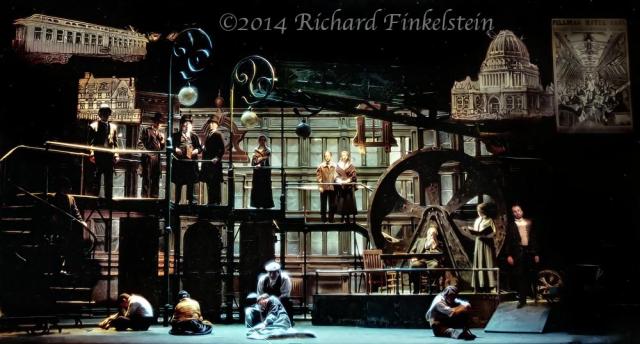
Recently in danger of closing its doors due to funding gouges, New York State Theater Institute has survived and continues to bring serious theater to Troy, NY— and sometimes down into Manhattan. After a charming Beauty and the Beast and a ham-fisted Slow Dance on the Killing Ground, the company is back with American Enterprise, Jeffrey Sweet’s bio of entrepreneur George M. Pullman (John Romeo).
The Pullman we first see is a saintly though opportunistic one. His idea for creating railroad cars that are wide and comfortable meets with resistance from other train bigwigs — until he offers the bereaved Mrs. Lincoln a ride. Pullman’s plan to build a clean, safe town for his workers seems like madness — until he and the community, an independent suburb of Chicago, begin to thrive. But soon enough we discover Pullman to be a control freak, who is grooming a clerk (Erol K.C. Landis) to be his successor while ignoring his alcoholic son (David Bunce) and is unable to comprehend why starving workers won’t accept lower wages during a depression.
It’s a good story, that of the bold capitalist as naive as he is refractory. Playwright Sweet locks in on all the necessary conflicts but falls short of truly dramatizing them. By relying on narration, short scenes, and generally unnecessary songs (also by Sweet), American Enterprise feels like a synopsis for 18 voices rather than a rich political drama.
The problem is only exacerbated by Patricia Birch’s staging, which treats the piece like high school Brecht (which it sort of is). Messrs. Romeo, Landis, and Bunce are capable but still lapse into cardboard non-dimensionality. Not lost in the event parade, though, are Gerard Curran as union organizer Eugene V. Debs, the lighting design of John McClain, Brent Griffin’s period costumes, and set designer Richard Finkelstein’s inexorable steel wheel.
